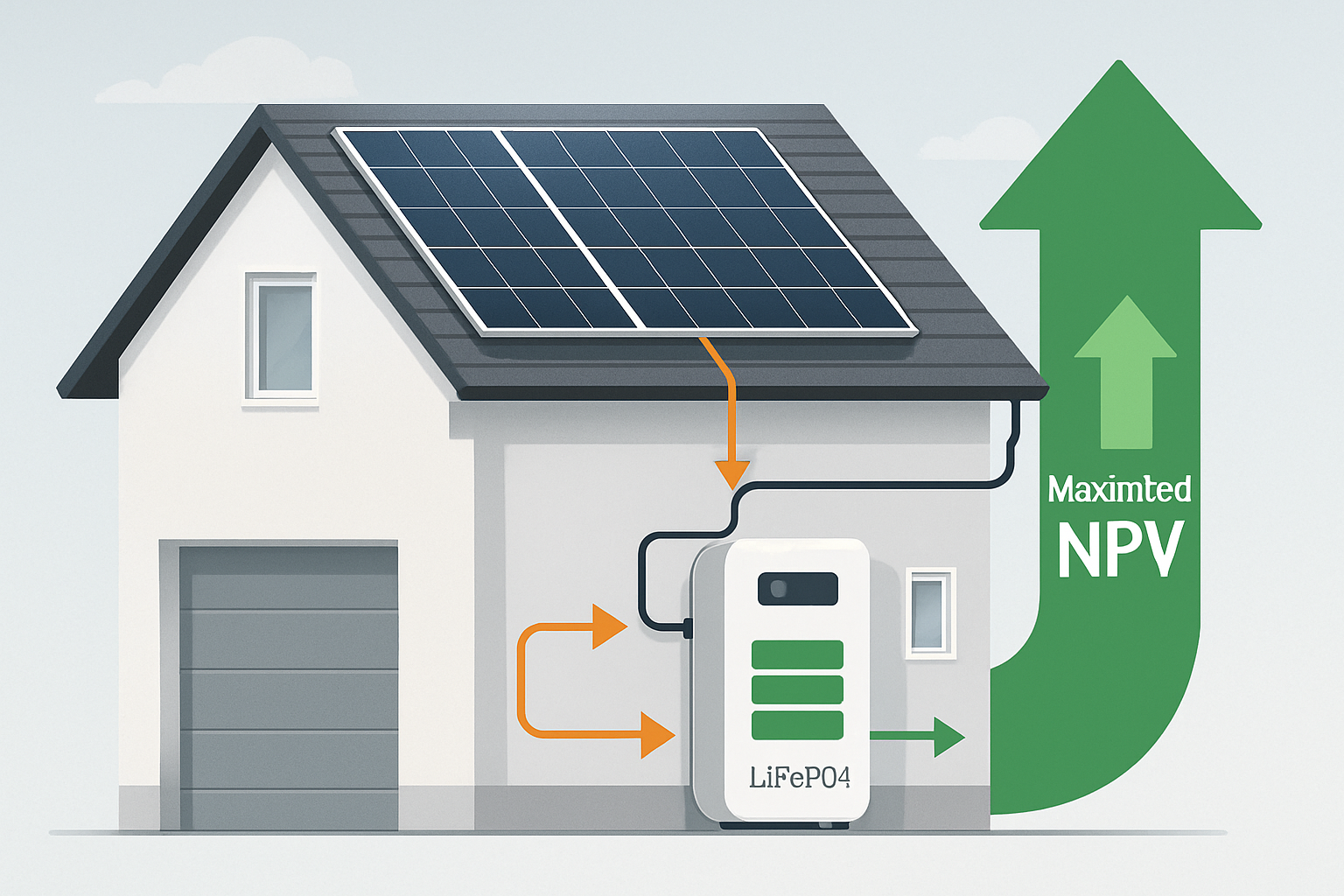The solar industry is shifting from P-type PERC to higher-efficiency N-type architectures. This guide explains how TOPCon and HJT compete in today’s market and why Tandem (especially perovskite-on-silicon) is drawing R&D attention. We focus on practical, source-backed takeaways to support real-world module selection in 2025.
Why N-Type Is Winning: The Case for TOPCon
What it is. Tunnel Oxide Passivated Contact (TOPCon) adds a thin tunnel oxide and doped polysilicon layer to reduce recombination and lift voltage compared with PERC. Multiple roadmaps indicate that N-type TOPCon became or is becoming the mainstream cell concept as new capacity ramps. See the latest industry roadmap for adoption trends (ITRPV 2025; ITRPV 2024).
Efficiency & yield. Commercial TOPCon modules typically show higher nameplate efficiency than legacy PERC and improved temperature coefficients; market reports summarize these ranges and trends (Fraunhofer ISE Photovoltaics Report).
Why it scales. Many manufacturers can upgrade from PERC lines, keeping costs competitive and accelerating volume—one reason TOPCon capacity expanded quickly in 2024–2025 (IEA-PVPS Trends 2024).
HJT: Premium Efficiency With Cost Headwinds
What it is. Heterojunction (HJT) bonds thin amorphous silicon layers to a crystalline wafer, achieving strong surface passivation and low recombination. This architecture is known for excellent temperature behavior and low degradation.
Trade-offs. HJT has historically required specialized tools and higher silver consumption, though reports discuss ongoing metallization innovations to reduce cost (ITRPV 2025; Fraunhofer ISE 2025 PDF).
Where it fits. In space-constrained rooftops or yield-max projects, HJT’s temperature and bifacial response can offset higher upfront module cost—evaluate at the system LCOE level rather than module $/W alone.
Tandem: The Next Efficiency Wave
Concept. Tandem cells stack absorbers tuned to different parts of the spectrum (e.g., perovskite over silicon) to beat the single-junction limit. Lab records for perovskite–silicon tandems exceed 30% on research cells (NREL Best Research-Cell chart; data compendium: NREL data; peer-reviewed tables: Wiley efficiency tables).
2025 reality check. Commercialization is emerging but constrained by durability (moisture/thermal) and scale economics. Expect pilots and niche deployments; broad, low-cost availability depends on proven stability and manufacturing maturity (IEA-PVPS overview).
Head-to-Head Comparison (2025)
| Feature | TOPCon (N-type) | HJT (N-type) | Tandem (Perovskite/Si) |
|---|---|---|---|
| Typical module efficiency range* | High vs legacy PERC (see market summaries) | Very high; leading temperature behavior | Lab cells >30%; commercial: early-stage |
| Manufacturing maturity | Mass-market; leverages upgraded lines | Growing but cost-sensitive metallurgy | Pilots/R&D; scaling & durability in focus |
| 2025 market positioning | Mainstream choice | Premium/niche where yield is critical | Emerging, not yet widespread |
| Key advantages | Cost-performance balance; fast scale-up | Top-tier efficiency, low degradation | Highest theoretical power density |
| Key challenges | Process complexity vs PERC | Metallization cost; process CAPEX | Long-term stability; cost reduction |
*Ranges depend on vendor, format, and test standards. Always verify current datasheets.
Decision Guide
- Budget-constrained, broad deployment: TOPCon usually offers the best near-term $/kWh with modern specs.
- Space-limited rooftops or hot climates: Evaluate HJT for better temperature coefficient and low early degradation.
- R&D/flagship demos: Consider Tandem where technology risk is acceptable and monitoring is rigorous.
Methodology & Sources
Claims in this article are aligned with current public roadmaps and datasets. See:
- International Technology Roadmap for PV (ITRPV) 2025
- ITRPV 2024 (15th edition)
- IEA-PVPS Trends in PV Applications 2024
- Fraunhofer ISE Photovoltaics Report (PDF, 2025-05-29)
- Fraunhofer ISE Photovoltaics Report (overview)
- NREL Best Research-Cell Efficiency (chart) & NREL data table
- Wiley: Solar cell efficiency tables (Version 64, 2024)
- IEA-PVPS Trends overview page
FAQ
Is PERC obsolete in 2025?
No. PERC remains in the field and in some procurement, but new capacity additions and shipments increasingly favor N-type architectures per industry roadmaps.
How do TOPCon and HJT differ most?
TOPCon extends PERC with passivating contacts and scales well on upgraded lines; HJT uses heterojunction passivation with strong temperature and degradation behavior but higher process costs.
When will Tandem be widely available?
R&D progress is rapid, with >30% lab cell records, but broad, low-cost module availability depends on proven long-term stability and manufacturing scale-up.




Leave a comment
All comments are moderated before being published.
This site is protected by hCaptcha and the hCaptcha Privacy Policy and Terms of Service apply.